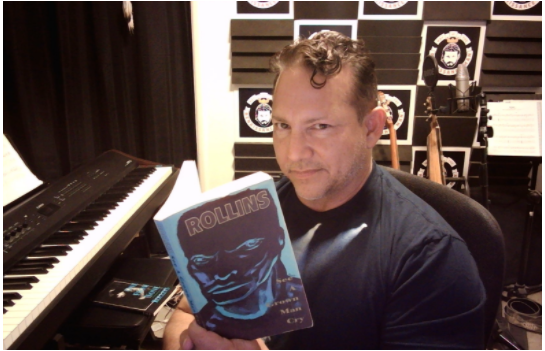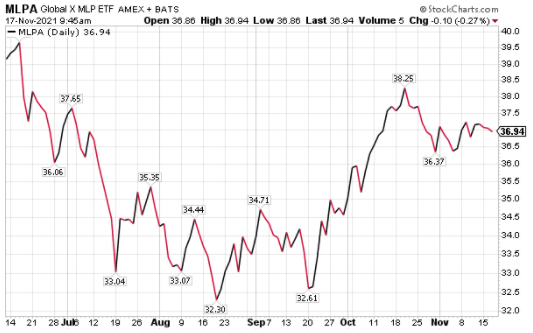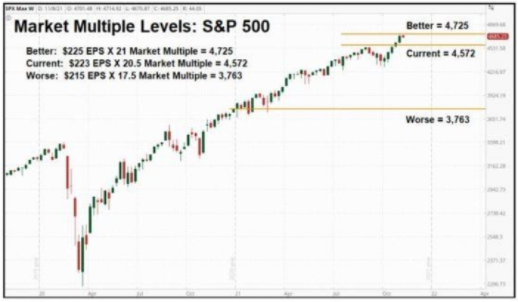10 Punk Rock Rules For Success
“I just wish to shine brighter, and if it burns my body to a crisp, I’m happy to go right now.”
That bit of high-intensity wisdom comes from a man who I admire deeply: singer, songwriter, spoken-word artist, author, actor, radio and TV show host, publisher and true renaissance man Henry Rollins.
Henry made his mark on pop culture as the frontman for the quintessential punk rock band Black Flag, and then later via the Rollins Band, and he turned that experience into a multi-faceted and eminently interesting career fit for a true polymath. His career continues today, mostly through writing and one-man spoken word shows that combine the intensity of a punk rock concert with the intellectual stimulation of a TED Talk.
If you are a longtime reader of The Deep Woods, you probably know that I am a huge music fan and a huge fan of renaissance men (and women) who are able to do many different things in life and to do those things very well. In fact, I have an entire website and podcast appropriately called Way of the Renaissance Man, which is dedicated to extracting wisdom and knowledge from these types of individuals so that we can apply that wisdom and knowledge to our own lives.
A couple of years ago, another polymath I admire, entrepreneur, investor and business inspirer Evan Carmichael, compiled a list that he called “Henry Rollins’s Top 10 Rules for Success.” You can watch the video on YouTube. I recommend doing so, as it will give you a sense of the intensity and focus Henry puts into just about every breath he takes.
Here is a list of those top 10 rules (complete with sage advice straight from Henry himself), rules that I also try to live by, and rules that can help everyone — regardless of what stage they are at in life — achieve just that little bit extra that makes life glorious.
Rule 1: Be Driven
Rollins says he uses childhood anger and fear of failure to fuel his sense of drive. “I descend from the sky and land on things really hard, and I go at everything with that amount of fury,” Rollins says. Now that is a definition of drive that we all can admire.
Rule 2: Work Hard
Rollins says that no matter what he does, he goes at everything “fully engaged, and that intensity has served him quite well.” He also credits his punk rock roots for that work ethic, as everything in the early days was a sort of do-it-yourself exercise in just trying to make it from week to week.
Rule 3: Keep Moving Forward
Continue to consistently work hard and always move forward in life. “I keep moving forward boldly because I have nothing to lose,” Rollins says. Of course, regardless of whether you think you have nothing to lose, life requires constant movement, or we fall into stagnation. “I like to work… It’s about activity and challenge,” he adds.
Rule 4: Just Do It
He tells the story about starting his own book publishing company, which was the essence of punk rock “DIY.” “You just do it; you don’t even think about it… and without hesitation I’m making my own book company. Stop me. I dare you,” Rollins recalls.

Your editor doing a little Henry Rollins reading.
Rule 5: Take Your Shot
The “shot” for Rollins came when he was asked to audition as the singer for the iconic punk band Black Flag. He took a train from his home in Washington, D.C., to New York City and sang every song the band had. About 10 minutes after the audition was over, he was offered the job as the frontman of his favorite band. Now that is taking advantage of your “shot” in life.
Rule 6: Communicate Emotionally
“I feel a genuine need to communicate with an audience,” Rollins shares. That’s the way he describes his interaction with a crowd, because he sees it as the best way to genuinely connect with others. “It’s about communication, warning, broadcasting, emitting and trying to leave something of myself with the audience,” Rollins says. This rule is one of my favorites, because it’s also what I attempt to do each week in this publication.
Rule 7: Try Out Different Things
“Yeah, I’ll try that. I mean, why would I hold back?” This also is one of my favorite rules, as it encapsulates the fearlessness with which life should be approached. If there is something you want to do in life, try it out. The worse that can happen is you don’t like it, or you aren’t good at it. So what? At least you challenged yourself to stretch out and experience life in a different way.
Rule 8: Manage Yourself
“The repeating factors of my life have been application, discipline, focus, repetition,” Rollins says. These keys for Rollins are also largely the keys to success of many high achievers. The reason why is because application, discipline, focus and repetition are how you really get good at something. No matter how much natural talent you might possess, you never will be extraordinary at a skill unless you apply yourself with the requisite discipline, focus and repetition required to achieve the highest levels of whatever it is you do.
Rule 9: Learn from Your Past
“The past holds all of your mistakes and humiliations. The future holds whatever you can make it,” Rollins says. He doesn’t think you should ignore the past, but he doesn’t think you should dwell on it and be miserable. Instead, you should learn from it and move on. “The future’s ready for you to not make those mistakes,” Rollins adds.
Rule 10: Have Passion
Here is the key rule to life that both Rollins and I embrace, as it’s really at the heart of your existence. Because whatever you do, and whatever time you have to do it, why not live it all the way? Forget about half-hearted effort or “just okay” results.
Have the passion to attack life like a punk rock frontman — with all the intensity and hardcore aggression that meets life head on and that embraces the struggle. Because in the end, all we have is how we lived.
P.S. If you like this article, then I invite you to listen to a very special audio version of “10 Punk Rock Rules for Life,” which has just been posted to my website, Way of the Renaissance Man.
***************************************************************
ETF Talk: Drilling for a ‘Hot’ Master Limited Partnership ETF
The energy market is facing what is popularly called a “Catch-22.” While the worldwide desire to shift to cleaner sources of energy to preserve the standard of life that humanity has grown accustomed to has put pressure on energy stocks, the global supply chain shortage due to the continuing worldwide effects and periodic outbreaks of COVID-19 keeps boosting energy stocks.
As a result of this paradox, investors will likely remain interested in energy companies for the foreseeable future. One form of energy company that has received attention as of late is the master limited partnership (MLP).
Similar in some ways to the real estate investment trust (REIT), the MLP combines the tax benefits of a private partnership with the liquidity of a publicly traded company. To qualify for such a designation (and the tax benefits that come with it), an MLP must generate at least 90% or more of its income from activities like the production, storage and transportation of natural resources.
An exchange-traded fund (ETF) that is dedicated to MLPs is the Global X MLP ETF (NYSEARCA: MLPA). Specifically, MLPA is exclusively centered around 20 to 30 U.S.-listed midstream MLPs, but it is especially interested in companies that are involved with transporting, storing and processing energy products. Companies are weighted by market capitalization, and the index is rebalanced each quarter.
Currently, the fund’s top holdings include Enterprise Products Partners LP (NYSE: EPD), Energy Transfer LP (NYSE: ET), Magellan Midstream Partners LP (NYSE: MMP), MPLX LP Partnership Units (NYSE: MPLX), Genesis Energy LP (NYSE: GEL), Plains All American Pipeline LP (NASDAQ: PAA), Western Midstream Partners LP (NYSE: WES) and DCP Midstream LP (NYSE: DCP).
This fund’s performance has been relatively strong, even when including the damage done by the COVID-19 pandemic. As of Nov. 16, MLPA has been down 1.78% over the past month but up 9.88% for the past three months. It is currently up 47.77% year to date.

Chart courtesy of www.stockcharts.com
The fund has amassed $1.09 billion in assets under management and has an expense ratio of 0.46%.
In short, while MLPA does provide an investor with a way to profit from MLP companies, this kind of ETF may not be appropriate for all portfolios. Thus, interested investors always should conduct their due diligence and decide whether the fund is suitable for their investing goals.
As always, I am happy to answer any of your questions about ETFs, so do not hesitate to send me an email. You just may see your question answered in a future ETF Talk.
*******************************************************************
In case you missed it…
Is A 29% Plunge Coming?
Stocks are in a bullish mood. In fact, the markets are up about 6.6% over the past month, and year to date, the broad-based measure of the domestic equity market, the S&P 500 index, is up some 24.6%. Yes, it’s another bull march for stocks, and that’s made intrepid investors a lot of money along the way (and that’s especially true for subscribers to my newsletter advisory services).
Yet what if I told you that given this market’s fundamental and technical dynamics, there is a possibility of up to a 29% plunge off current levels?
Okay, now catch your breath for a moment and hear me out. First, I am NOT saying that a 29% plunge is imminent. Far from it. In fact, I see more upside in equities as we close out the year due to factors such as the Federal Reserve signaling what the market expects on its tapering plans (start that sigh of relief).
Still, if we do a little market multiple analysis and plot that analysis on a chart of the S&P 500, we do find that from a valuation standpoint this market has far less upside potential here than it does downside exposure, at least by historical valuation measures.
Let’s take a look at an excerpt from this morning’s edition of my daily market briefing, the “Eagle Eye Opener,” to see just what I mean. Here, we will look at the “current situation” with respect to the market multiple, the “better-if” scenario and what that means on the charts and then the dreaded “worse-if” scenario, which pegs that potential for a 20% plunge.
The Current Situation: The current situation improved in November with respect to the market multiple, with expected 2022 S&P 500 earnings rising from $220/share in October to $223/share this month and the multiple range increasing from 19.5X-20X in October to 20X-21X now. Those new figures provide us with an updated target range spanning from 4,460 to 4,683 with a midpoint level of 4,572.
Looking at the chart, the current situation is appropriately in line with where stocks ended October. Notably, there was some very light volatility around the midpoint at 4,572 in late October, which increases the technical significance of that level as more volume traded hands there and it should be viewed as a key initial support level on a lower time frame. Below there, the low end of the current situation at 4,460 corresponds with the upper portion of the broad pivot reversal out of the late-September/early October bout of volatility and should be viewed as a secondary support level near to medium term.

The Things Get Better If Scenario: After a slight deterioration in October, the better-if scenario rebounded back higher in November as the multiple increased from 20.5X to 21X, while 2022 earnings expectations for the S&P 500 held steady at $225/share. That provides a new better-if scenario target of 4,725, up from 4,613 in October.
On Friday, Nov. 5, the S&P 500 came within seven points of the new better-if target, but stocks have since turned sideways as the sprint higher in stocks realized over the last month is digested. In the near-term, we expect the better-if target of 4,725 to act as a modest resistance area unless there is a meaningfully positive catalyst that could send stocks to new record highs.
Since our last market multiple chart analysis, the S&P 500 finally hit the longstanding measured move target that we calculated using the extremes of the massive trading range of first-half 2020. That target was 4,596 and, interestingly, there was some noticeable profit taking at that level as the S&P edged past that mark by two points on Oct. 26, before dropping by nearly 50 points in the subsequent two sessions. It was not as substantial a resistance level as initially expected but the fact that there was hesitation by the market at 4,596 reiterates the importance of technicals on the broader stock market.
For the last few months, we have been running a regression line through this year’s price action and extending it through the end of December to help offer an additional upside target into year-end based on 2021 price action. The latest update provides us with a year-end target of 4,785 for the S&P 500, down modestly from last month’s target of 4,825. The lower revision reflects the loss of upside momentum during the September/October pullback. From where the S&P 500 began the week, that is less than a 2% move higher for the index.
The Things Get Worse If Scenario: After several months with no change, the worse-if scenario improved modestly in the November market-multiple update as 2022 S&P 500 earnings expectations increased by $5 to $215/share, with the multiple range unchanged at 17X-18X. Those figures provide a new target range of 3,655-3,870 with a midpoint of 3,763.
The upper half of the worse-if scenario range between 3,763 (midpoint) and 3,870 (upper bound) encompasses most of the moderately volatile trade that occurred in the first quarter of 2021 (think GME squeeze and the Archegos debacle), which adds technical significance to the area due to the high amount of volume that changed hands. Additionally, the midpoint of the worse-if range on the S&P 500 is within 10 points of where the index closed out 2020 and began 2021, another reason it would be psychologically important in the event we see a substantial surge in volatility between now and year-end.
Yet from the latest all-time highs, a drop to the worse-if target zone would constitute a decline of between 21% (upper end) and 29% (lower end), which would mean the stock market giving back all the year-to-date gains.
Now again, I am not saying this is going to happen. I DO NOT think it will. Yet doing this kind of analysis, the sort you’ll find every trading day in the “Eagle Eye Opener,” is the kind of prudent lens by which to look at this market — or any market.
So, if you don’t want to be blindsided by the market’s valuation, by the real drivers of the market or the potential exogenous events that can threaten your money, you should consider subscribing to the “Eagle Eye Opener” today. Doing so will not only give you piece of mind, but it also will give you the confidence to act in defense of your own money so that you can maximize gains and minimize portfolio damage.
*****************************************************************
More Beautiful Tears
“The moment we cry in a film is not when things are sad but when they turn out to be more beautiful than we expected them to be.”
— Alain de Botton
The writer and television producer is known for trying to make philosophy relevant to everyday life. I like this mission, because that also is what I do in this publication, and in all of my publications and via my podcast. Here, de Botton reminds us that unexpected beauty is one of the most sublime experiences a human can have, and that is the type of experience I recommend seeking out regularly.
Wisdom about money, investing and life can be found anywhere. If you have a good quote that you’d like me to share with your fellow readers, send it to me, along with any comments, questions and suggestions you have about my newsletters, seminars or anything else. Click here to ask Jim.


